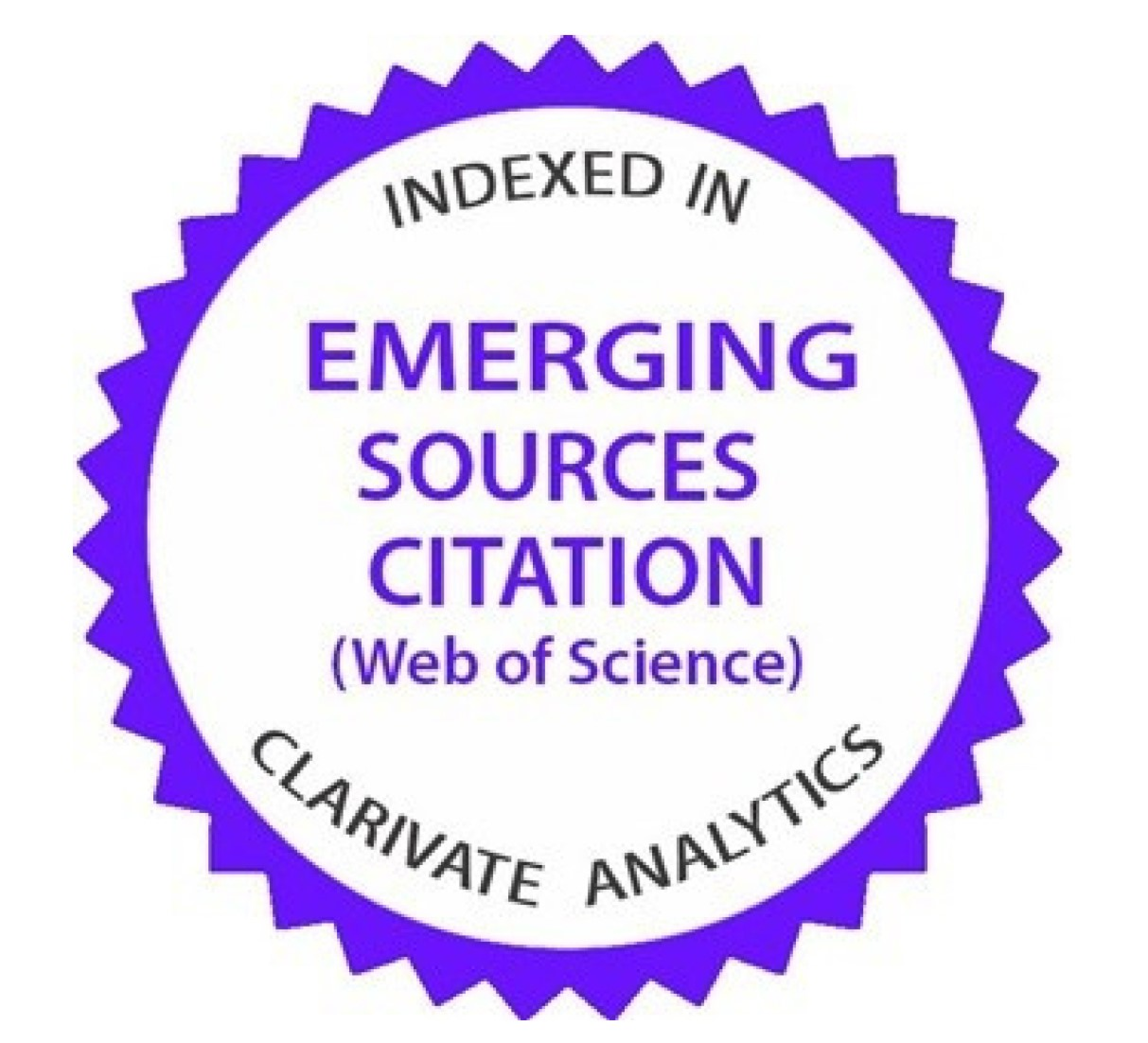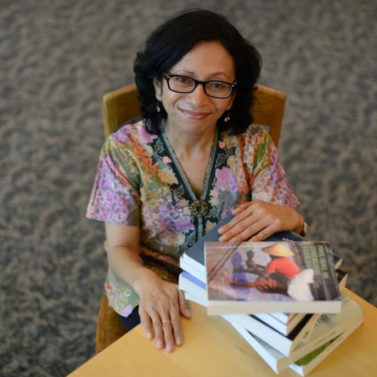The liquid identity of adolescents with disabilities: Changes in the identity of adolescents with disabilities in social media
Downloads
Studies on liquid identity have been done by many previous researchers. However, this article sees it differently where liquid identity is experienced by adolescents with disabilities who basically have many difficulties, obstacles in interacting with society in general. This study aimed to look at the process, intention, and purpose of the liquid identity experienced by adolescents with disabilities on social media. This study used a virtual ethnographic method with informants who are members of the Facebook community named "Indonesian Association of People with Disabilities.” The number of informants is 23 adolescents with disabilities who are users of social media. The findings of this study showed that adolescents with disabilities take various ways to get recognition and acceptance by a wide audience according to their type and characteristics. This is done by using social media called liquid identity. To get recognition and acceptance on social media, the practice of liquid identity of adolescents with disabilities was shown by hiding their real identity, having multiple accounts, and sharing positive things on social media. This study concluded that support from various parties is needed, either from the community, parents, friends, schools, and the environment. The role of these parties is important to provide motivation, enthusiasm, and encouragement so that adolescents with disabilities can show value on social media with their identity that is recognized by the public as a positive identity.
Bauman Z (2005) Liquid Life. Cambridge: Polity Press.
Cassidy W, Faucher C, & Jackson M (2017) Adversity in university: Cyberbullying and its impacts on students, faculty and administrators. International Journal of Environmental Research and Public Health 14 (8):888-906. https://doi.org/10.3390/ijerph14080888.
Cheng YS, Tseng PT, Lin PY, Chen TY, Stubbs B, Carvalho AF, Wu C, Chen Y, & Wu M (2018) Internet addiction and its relationship with suicidal behaviors: a Meta-Analysis of multinational observational studies. The Journal of clinical psychiatry 79 (4).
Eroğlu Y, Aktepe E, Akbaba S, Isik A, & Özkorumak E (2015) The investigation of prevalence and risk factors associated with cyber bullying and victimization. Egitim Ve Bilim-Education and Science 40 (177):93-107. http://doi.org/10.15390/eb.2015.3698.
Groce NE (2018) Global disability: an emerging issue. The Lancet Global Health 6 (7):e724-e725. https://doi.org/10.1016/S2214-109X(18)30265-1.
Hine C (2000) Virtual Ethnography. London: Sage Publications Ltd.
Heirman W, Angelopoulos S, Wegge D, Vandebosch H, Eggermont S, & Walrave M (2015) Cyberbullying-entrenched or cyberbully-free classrooms? A class network and class composition approach. Journal of Computer-Mediated Communication 20 (3):260-277. https://doi.org/10.1111/jcc4.12111.
Krahn GL, Walker DK, & Correa-De-Araujo R (2015) Persons with disabilities as an unrecognized health disparity population. American journal of public health 105 (S2):S198-S206. https://doi.org/10.2105/AJPH.2014.302182.
Kozinets RV (2002) The field behind the screen: Using netnography for marketing research in online communities. Journal of Marketing Research 39 (1):61-72. https://doi.org/10.1509/jmkr.39.1.61.18935.
Ludwianto B (2019) Milenial dominasi pengguna internet indonesia, 49% pernah alami bully. Kumparan, 16 Mei. [Accessed 15 May 2022]. https://kumparan.com/kumparantech/milenial-dominasipenggunainternet-indonesia-49-pernah-alami-bully-1r5a51IREcH/full.
Molz JG (2012) Travel connections: Tourism, technology and togetherness in a mobile world. London and New York: Routledge.
Nasrullah R (2017) Etnografi Virtual: Riset Komunikasi, Budaya, dan Sosioteknologi di Internet. Bandung: Simbiosa Rekatama Media.
Namkung EH & Carr D (2019) Perceived interpersonal and institutional discrimination among persons with disability in the U.S.: Do patterns differ by age? Social Science & Medicine 239 (October 2019):112521. https://doi.org/10.1016/j.socscimed.2019.112521.
Paccagnella L (1997) Getting the seats of your pants dirty: Strategies for ethnographic research on virtual communities. Journal of Computer-Mediated Communication 3 (1). https://doi. org/10.1111/j.1083-6101.1997.tb00065.x.
Patchin JW & Hinduja S (2006) Bullies move beyond the schoolyard: a Preliminary look at cyberbullying. Youth violence and juvenile justice 4 (2):148-169.
Patchin JW & Hinduja S (2017) Digital self-harm among adolescents. Journal of Adolescent Health 61 (6):761-766. https://doi.org/10.1016/j.jadohealth.2017.06.012.
Papacharissi (2002) The virtual sphere: The internet as a public sphere. New Media & Society 4 (1):9-27. https://doi.org/10.1177%2F14614440222226244.
Safaria T, Tentama F, & Suyono H (2016) Cyberbully, cybervictim, and forgiveness among indonesian high school students. Turkish Online Journal of Educational Technology-TOJET 15 (3):40-48.
Santrock JW (2012) Adolescence. In: Siyez DM (ed). Ankara: Nobel Academic (Trans ed).
Å evÄíková A, MacháÄková H, Wright MF, DÄ›dková L, & ÄŒerná A (2015) Social support seeking in relation to parental attachment and peer relationships among victims of cyberbullying. Journal of Psychologists and Counsellors in Schools 25 (2):170-182. https://doi.org/10.1017/jgc.2015.1.
Smith PK, Mahdavi J, Carvalho M, Fisher S, Russell S, & Tippe N (2008) Cyberbullying: Its nature and impact in secondary school pupils. Journal of child psychology and psychiatry 49 (4):376-385. https://doi.org/10.1111/j.1469-7610.2007.01846.x.
Solomos J (2014) Stuart Hall: Articulations of race, class and identity. Ethnic and Racial Studies 37 (10):1667-1675. https://doi.org/10.1080/01419870.2014.931997.
Tarı Cömert I & Kayıran SM (2010) Çocuk ve Ergenlerde Ä°nternet Kullanımı. Journal of Child 10 (4):166-170. https://doi.org/10.5222/j.child.2010.166.
Turkle S (1995) Life on the Screen: Identity in the Age of the Internet. New York: Simon & Schuster.
Turkle S (1999) Cyberspace and identity. Contemporary sociology 28 (6):643-648.
Van Ouytsel J, Walrave M, & Vandebosch H (2015) Correlates of cyberbullying and how school nurses can respond. NASN School Nurse 30 (3):162-170. https://doi.org/10.1177%2F1942602X13519477.
Van Zoonen L (2002) Gendering the Internet: Claims, controversies and cultures. European Journal of Communication 17 (1):5-23. https://doi.org/10.1177%2F0267323102017001605.
Varghese ME & Pistole MC (2017) College student cyberbullying: Self"esteem, depression, loneliness, and attachment. Journal of College Counseling 20 (1)7-21. https://doi.org/10.1002/jocc.12055.
Watts LK, Wagner J, Velasquez B, & Behrens PI (2017) Cyberbullying in higher education: A literature review. Computers in Human Behavior 69: 268-274. https://doi.org/10.1016/j.chb.2016.12.038.
Xiaorong Z (2018) Book Review: Mariza Georgalou, Discourse and Identity on Facebook: How We Use Language and Multimodal Texts to Present Identity Online. Discourse Studies 20 (4):567-569. https://doi.org/10.1177%2F1461445618773559b.
Copyright (c) 2022 Masyarakat, Kebudayaan dan Politik

This work is licensed under a Creative Commons Attribution-NonCommercial-ShareAlike 4.0 International License.
Copyright of this journal is possession of Editorial Board and Journal Manager, by the knowledge of the author, while the moral right of the publication belongs to the author.
The formal legal aspect of journal publication accessibility refers to Creative Commons Attribution-NonCommercial-ShareAlike (CC BY-NC-SA), implies that publication can be used for non-commercial purposes in its original form (cannot be modified).
Every publication (printed/electronic) are open access for educational purposes, research, and library. Other than the aims mentioned above, the editorial board is not responsible for copyright violation.
















